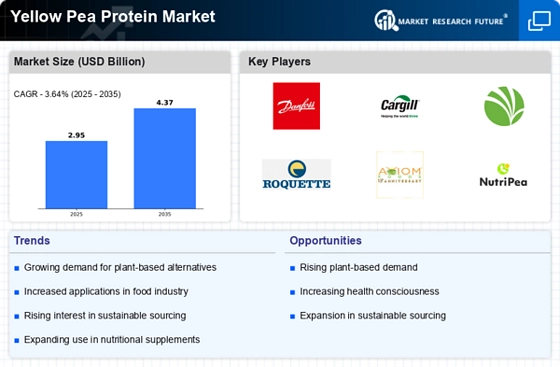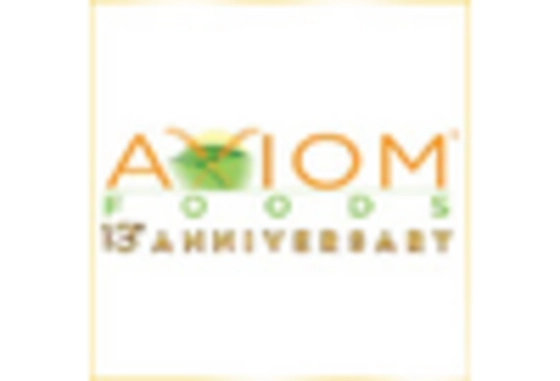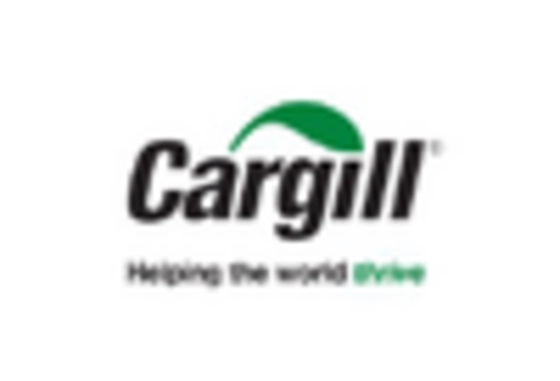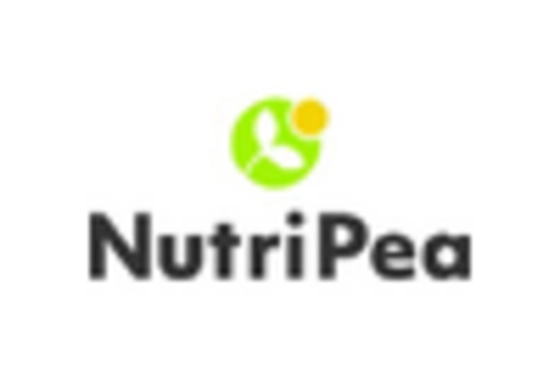Innovative Marketing Strategies
Innovative marketing strategies employed by companies in the Yellow Pea Protein Market are likely to enhance consumer engagement and drive sales. Brands are increasingly utilizing social media platforms and influencer partnerships to promote the benefits of yellow pea protein. This approach not only raises awareness but also educates consumers about the nutritional advantages of incorporating yellow pea protein into their diets. As a result, companies are witnessing a notable increase in brand loyalty and consumer interest. The effective use of digital marketing is expected to play a crucial role in shaping the future of the Yellow Pea Protein Market, as it allows for targeted outreach to health-conscious consumers.
Versatility in Food Applications
The versatility of yellow pea protein in various food applications is another significant driver for the Yellow Pea Protein Market. This protein can be utilized in a wide range of products, including meat alternatives, dairy substitutes, and protein bars. Its neutral flavor profile allows it to blend seamlessly into different formulations, appealing to both manufacturers and consumers. The market for meat alternatives alone is expected to reach USD 140 billion by 2029, indicating a substantial opportunity for yellow pea protein to be incorporated into these products. This adaptability enhances the attractiveness of the Yellow Pea Protein Market, as it caters to diverse consumer preferences.
Rising Vegan and Vegetarian Populations
The growing populations of vegans and vegetarians are likely to contribute significantly to the Yellow Pea Protein Market. As more individuals adopt plant-based diets for ethical, environmental, or health reasons, the demand for plant-based protein sources, including yellow pea protein, is expected to surge. Recent statistics suggest that the number of vegans has increased by 300% in the last decade, indicating a shift in dietary habits. This demographic shift not only drives demand but also encourages innovation in product development within the Yellow Pea Protein Market, as companies strive to meet the needs of this expanding consumer base.
Sustainability and Eco-Friendly Practices
Sustainability concerns are increasingly influencing consumer choices, thereby impacting the Yellow Pea Protein Market. As awareness of environmental issues grows, consumers are more inclined to choose products that are perceived as sustainable. Yellow pea protein, being derived from legumes, has a lower environmental footprint compared to animal-based proteins. This aspect is particularly appealing to environmentally conscious consumers. Furthermore, the plant-based protein market is projected to reach USD 27 billion by 2027, reflecting a shift towards more sustainable food sources. This trend suggests that the Yellow Pea Protein Market is well-positioned to benefit from the rising demand for eco-friendly products.
Health Consciousness and Nutritional Awareness
The increasing health consciousness among consumers appears to be a pivotal driver for the Yellow Pea Protein Market. As individuals become more aware of the nutritional benefits associated with plant-based proteins, the demand for yellow pea protein is likely to rise. This protein is rich in essential amino acids, making it an attractive alternative to animal-based proteins. Recent data indicates that the plant-based protein market is projected to grow at a compound annual growth rate of approximately 7.5% over the next five years. This trend suggests that consumers are actively seeking healthier dietary options, thereby propelling the growth of the Yellow Pea Protein Market.

















Leave a Comment